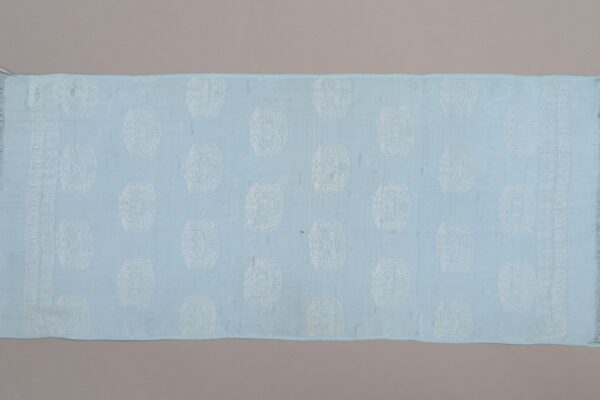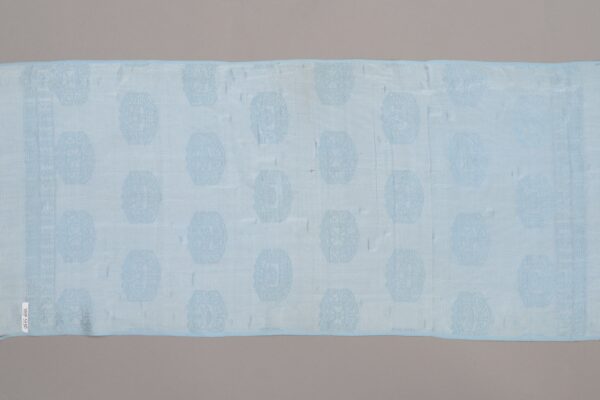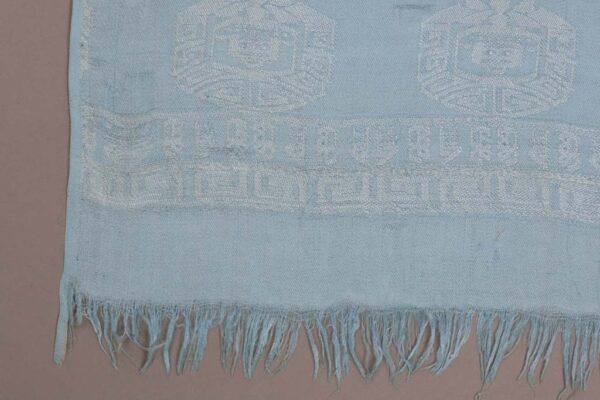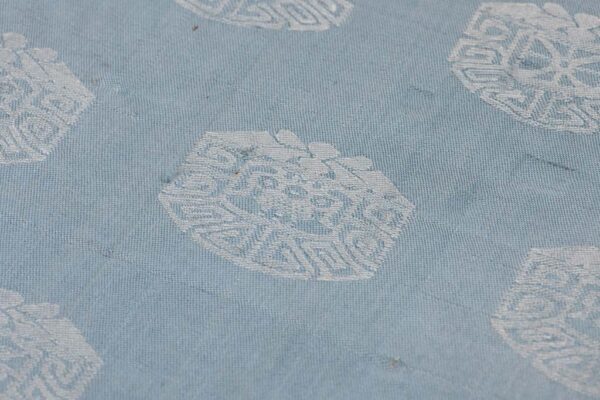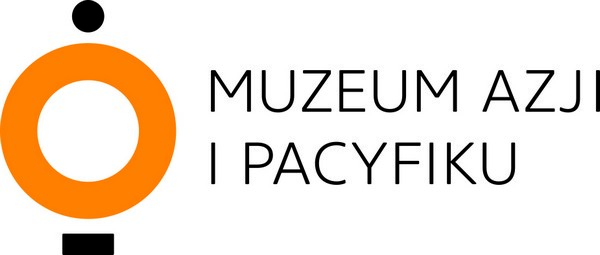A sacrificial scarf – khadak
Every month curators of the Asia and Pacific Museum carefully select one object representing various parts of our new permanent exhibition Journeys to the east through the cultures of the Middle East, Central Asia, Mongolia and Indonesia.
In April we pay particular attention to a sacrificial scarf – khadak. It is a thin silk scarf of light blue color, finished with warp fringes on the short sides. It is a damask fabric: it is decorated with shiny patterns on a matte background obtained in the weaving process, and on the other side – the same patterns are matte on a shiny background. These are Buddhist symbols within hexagonal fields arranged in horizontal rows. There are three identical symbols in each row, and in the subsiquent rows are (from top to bottom): a cylindrical banner of victory, a canopy/umbrella, a precious vase, and the wheel of the Law with eight spokes. The same arrangement is repeated in the lower half of the scarf. Along the upper and lower edges of the fabric there are bands of meander and probably a line of writing (mantric syllables?)
Khadak scarves are most often made of silk. They are generally blue in Mongolia and white in Tibet (where one calls them: katak). They are from 30-40 cm to several meters long. Not only Buddhist symbols believed to be auspicious, but also texts of prayers and mantras may be showed on them.
According to tradition, in the countries of tantric Buddhism (Tibet, Mongolia and others), such scarves are given as a sign of respect or friendship and wishes of good luck. Many people are presented with them, both Buddhist lamas, often during religious ceremonies, as well as lay people.
To this day, despite the changes caused by the communist revolution in the 20th century, the custom of giving chadak to important/valued people continues in Mongolia. White katak scarves serve similar functions in Tibet.
Sacrificial scarf – khadak
Mongolia, 3rd quarter of the 20th c.
silk damask
dimensions: 93 x 41 cm
inv. no. MAP 3790
Photo by: Łukasz Brodowicz / the Asia and Pacific Museum

![grafika z tekstem [journeys to the east]](https://www.muzeumazji.pl/maip/uploads/2022/08/baner_strona_english_tn-1140x220.jpg)


